Banking on ‘everyday sustainability’ to shape Singapore’s green future
Sign up now: Get ST's newsletters delivered to your inbox

(Clockwise from top left) Mr Saurabh Mangla, Ms Liu Tingzhi, Ms B. Jane Cowie and Ms Genevieve Ang.
PHOTOS: AZMI ATHNI, WASTD, REFINDSG, JOVIAN LIM
Follow topic:
- Singapore designers prioritise sustainability by integrating eco-friendly practices into core operations
- DesignSingapore Council supports sustainable design through initiatives like Good Design Research
- Studios demonstrate resourcefulness by repurposing waste into fine furniture and ceramic glazes
AI generated
SINGAPORE – Home-grown designer Liu Tingzhi believes everything that the modern world needs today already exists – in waste.
“There’s no shortage of materials in the world, but what’s missing is imagination and the ability to see beauty in what’s been discarded,” says the 34-year-old, who founded local materials and design studio WASTD in 2024.
The atelier transforms waste into objects and surfaces for interiors, fashion and the hospitality sector.
More design studios in Singapore are gunning for “everyday sustainability” – embedding green practices into the core of daily operations – instead of treating eco-friendly initiatives as a standalone approach.
Even shards of glass and liquor bottles are being reimagined as works of art and architectural ceramic glazes.
Glass artist B. Jane Cowie, 63, of RefindSG, and designer-artist Genevieve Ang, 33, of Other Supply, are raising awareness for more to be done to repurpose glass in Singapore.
According to the National Environment Agency, Singapore generated 75,000 tonnes of glass waste in 2023, of which only 6,000 tonnes – only 8 per cent – were recycled.
This means about 69,000 tonnes of glass pieces were thrown away, most of which ended up in the Pulau Semakau landfill.
Ms Dawn Lim, executive director of national design agency DesignSingapore Council (DSG), says design is a powerful tool for creating tangible impact in sustainability. It can drive behavioural changes and build systems that are more resilient for people and the planet.
“Many local designers and design firms have embedded sustainability in their work for years, such as Forest & Whale, which started Reuse Lab in 2021, and Hans Tan, who was awarded a President’s Design Award in 2023 for his R for Repair project,” says Ms Lim.
Design studio Forest & Whale’s Reuse Lab created the KopiCup, a takeaway beverage container with a stainless-steel body and a replaceable braided nylon strap.
Hans Tan Studio’s founder Tan created the R for Repair project, which debuted at Singapore’s National Design Centre in January 2021. The initiative reframes repair as a creative, desirable alternative to disposal, showing how thoughtful design challenges a throwaway culture.
Ms Lim says DSG supports sustainability-related projects by Singapore designers through initiatives such as Good Design Research, which was rolled out in 2020.
The initiative provides funding, mentorship and industry support to designers who work on finding solutions through experimentation with materials, technology and processes.
Sustainability also remains a key topic in major outreach programmes such as the School Of Tomorrow exhibition, which debuted at Singapore Design Week 2023, designed to engage both children and adults in environmental issues and design-led innovations. It proved so popular that it returned in 2024 for a second “school term” at lifestyle destination New Bahru in Kim Yam Road.
“With sustainability being a focus area for the council since 2023, we will be deepening our efforts in our Design Masterplan 2035 to empower our design community to drive meaningful impact locally and globally,” Ms Lim adds.
DSG’s Design Masterplan 2035 is a refreshed national roadmap to chart the way forward for the design sector in the next decade.
The Straits Times spotlights four studios helping to shape a greener design future.
ipse ipsa ipsum goes beyond bespoke furniture
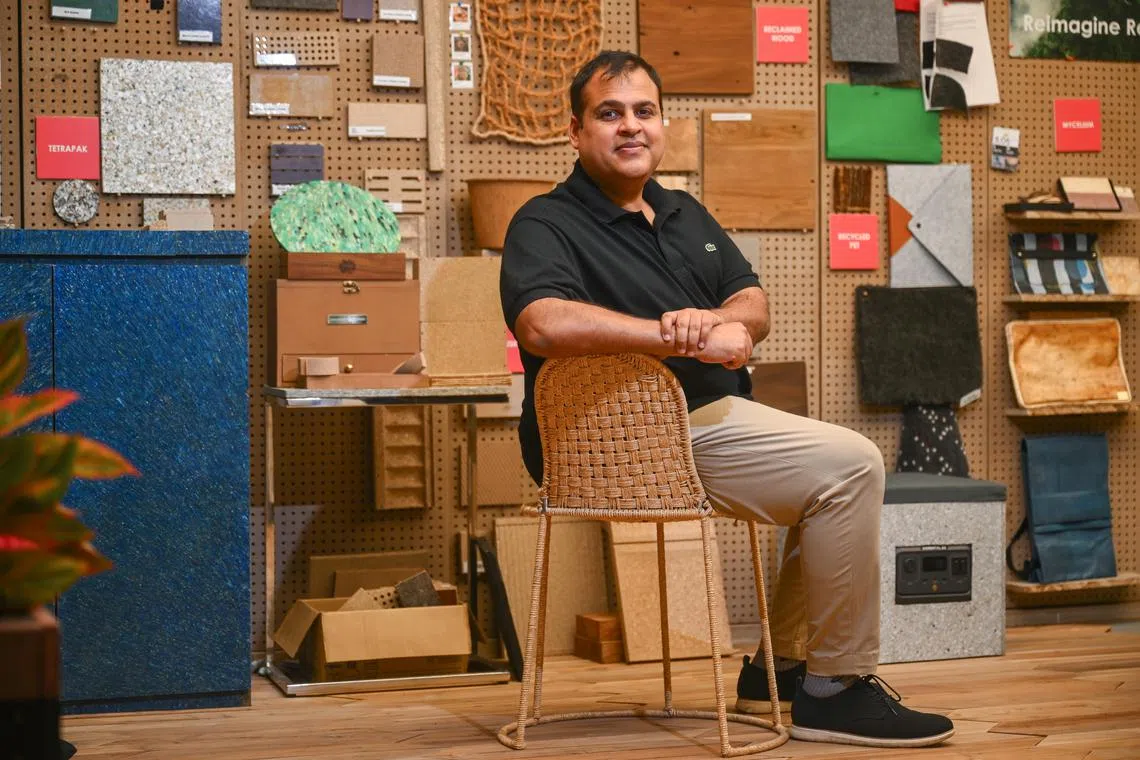
Mr Saurabh Mangla, founder of Singapore design firm ipse ipsa ipsum.
ST PHOTO: AZMI ATHNI
Mr Saurabh Mangla, founder of home-grown design studio ipse ipsa ipsum, has been championing sustainable design since launching his affordable luxury furniture brand in 2016.
His passion can be seen in the details of the atelier’s designs, right down to the ethical sourcing of animal bones for the intricate bone inlay work in a range of decorative sideboards and cabinets.
The brand name is derived from a Latin phrase that translates to “himself, herself, itself” in English, which Mr Mangla says focuses on the store’s bespoke edge.
“When we launched our furniture studio, we knew there was enough mass-produced furniture in the market,” says Mr Mangla, 45, who graduated with a postgraduate degree in materials and engineering from the University of Warwick’s Warwick Manufacturing Group in Britain in 2022.
It is a multi-disciplinary department specialising in tackling industrial, environmental and societal challenges through collaborative research with companies.
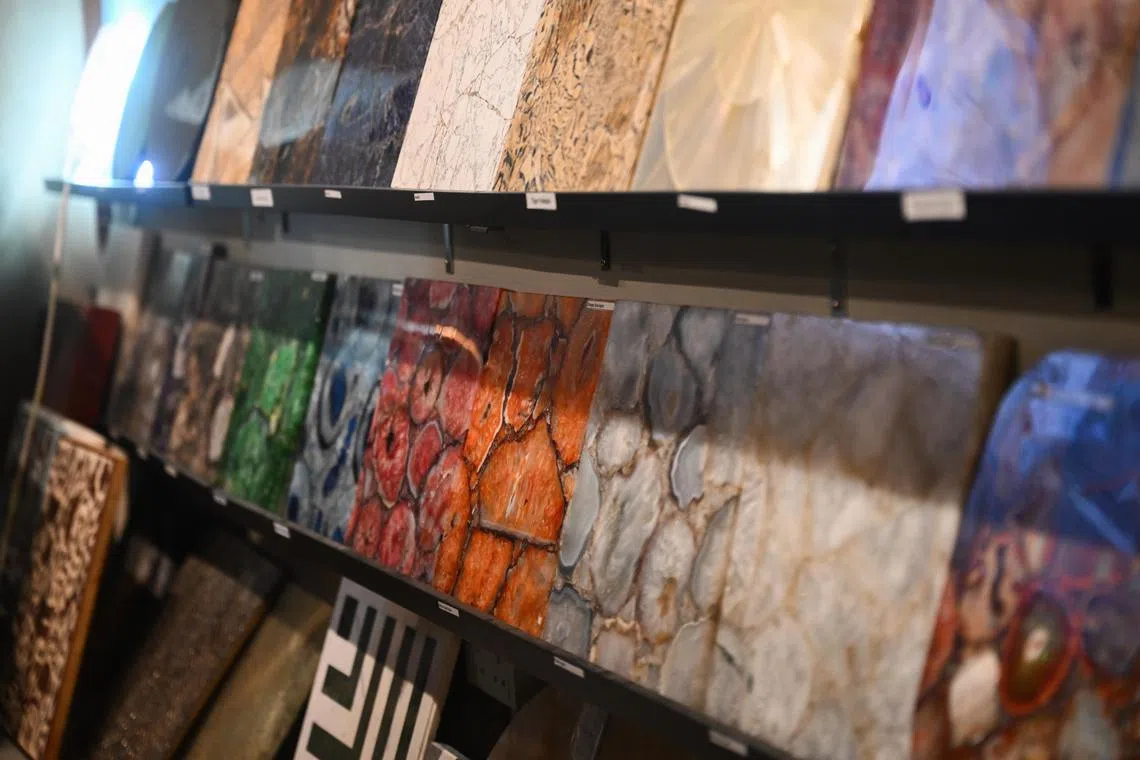
Material swatches of bone inlay and crystals at ipse ipsa ipsum’s store at Tan Boon Liat Building.
ST PHOTO: AZMI ATHNI
“People spend a lot of time looking for the right home in Singapore, but have to make do with furniture that looks quite homogenous.
“So, we named the store ipse ipsa ipsum to allude to a place where home owners can co-create something unique, using materials that are not harmful to humans or the planet.”
While the brand started out crafting statement pieces from reclaimed materials such as bone and agricultural waste, it has over the years evolved into a full-spectrum sustainability solutions partner, helping organisations reimagine waste as commercially viable, beautifully designed and socially impactful products.
His collaboration with the Peranakan Museum in 2018 led to the creation of a Peranakan inlay motif featuring the phoenix and tree of life, reimagined as a scalable, customisable surface finish for items such as nesting tables and desktop mirrors.
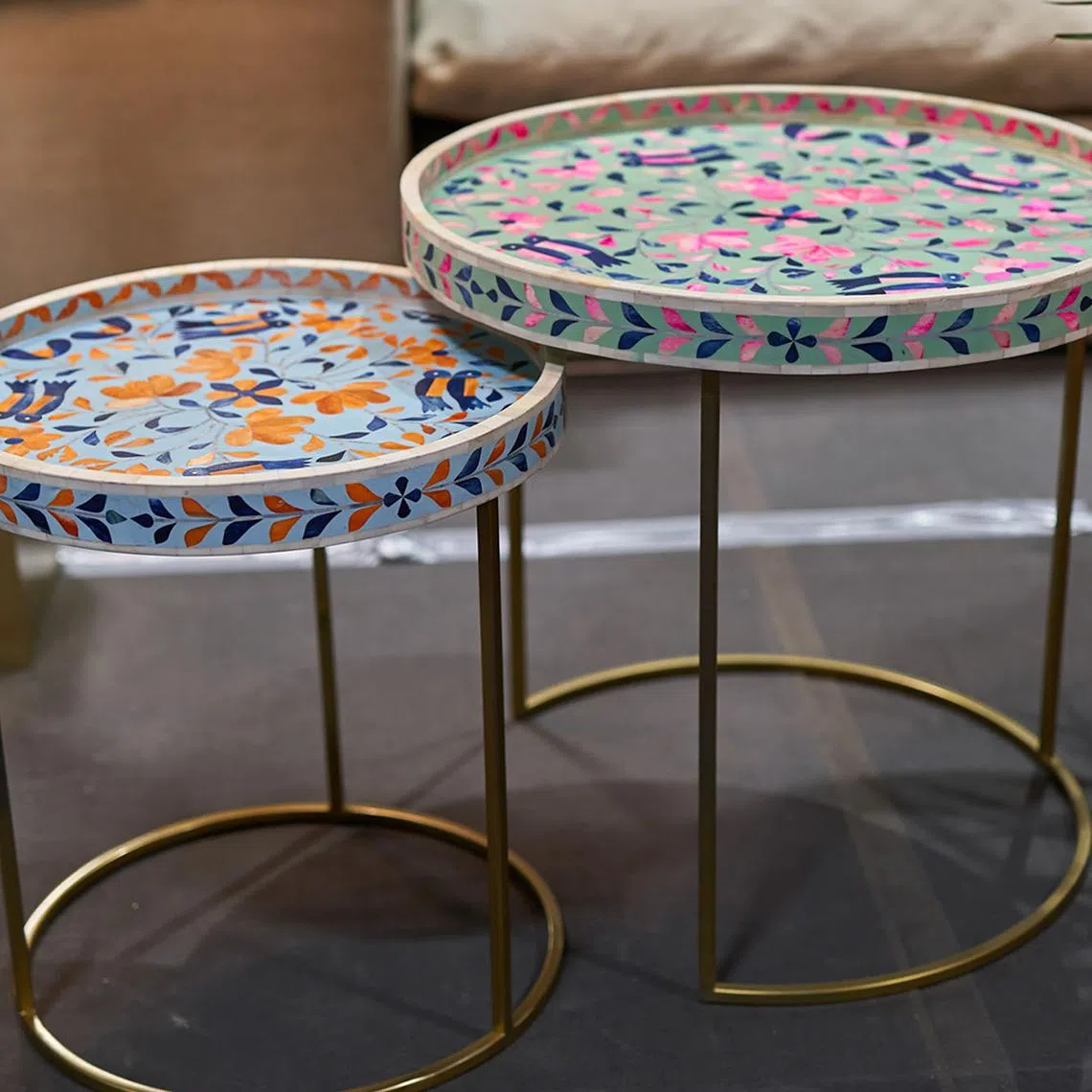
The collaboration between Mr Mangla’s studio and the Peranakan Museum in 2018 led to the creation of a Peranakan inlay motif, reimagined as a surface finish for items such as nesting tables.
PHOTO: IPSE IPSA IPSUM
The office has a team of five designers who collaborate with guest designers, microbiologists, fashion designers, artists and architects in Singapore and around the world.
The decor items are crafted by artisans in a village in Dingapur, in the north Indian state of Uttar Pradesh, using ethically sourced bone material from cattle which have died of natural causes.
This provides these artisans, who are descendants of ivory craftsmen, with a dignified, sustainable alternative that preserves heritage without harming the environment.
Mr Mangla and his team recently worked with Singapore Airlines to transform the parts of a retired A380 aircraft – including seats, windows, bar carts and overhead cabins – into luxury furniture in a range of materials.
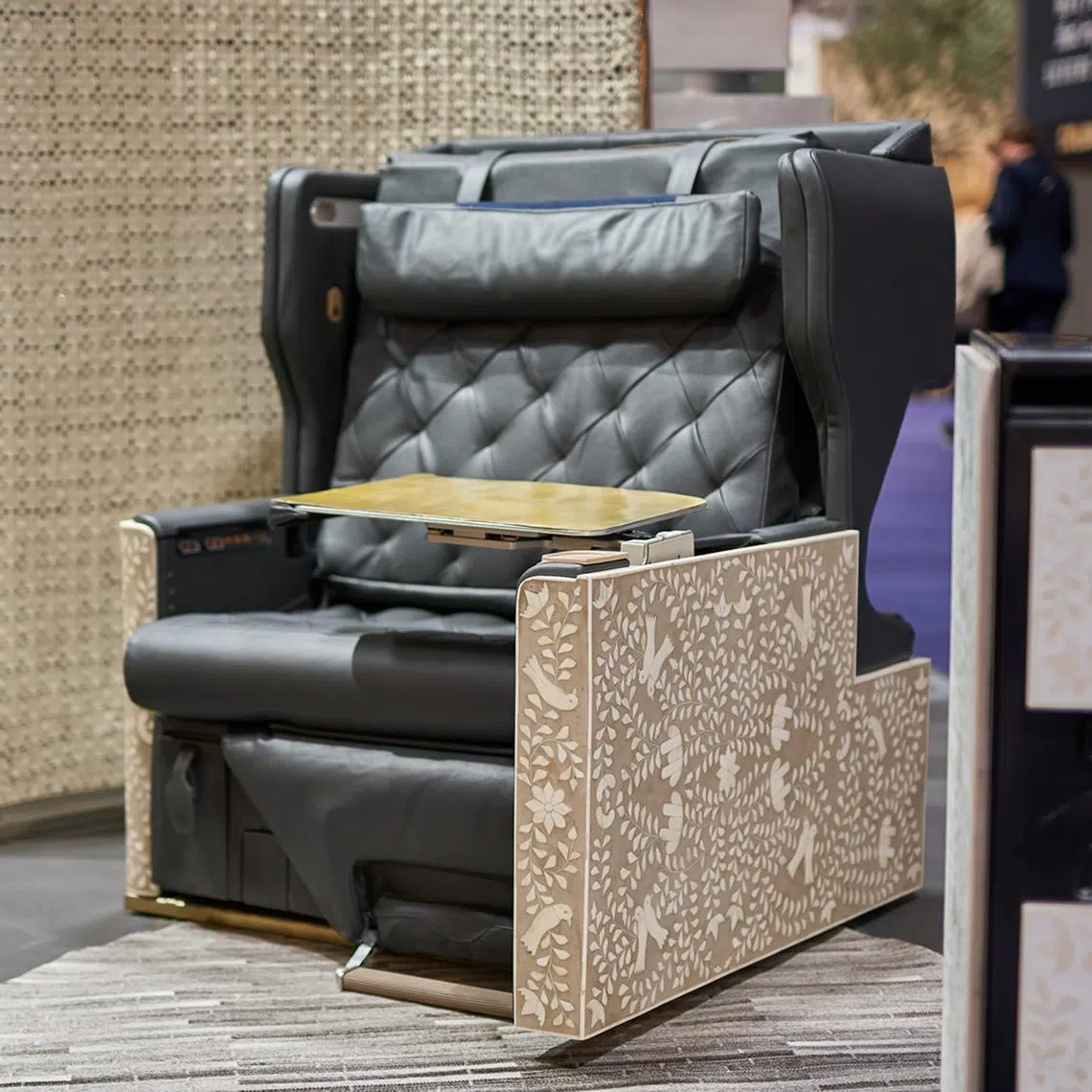
The team at ipse ipsa ipsum worked with Singapore Airlines to transform the parts of a retired A380 aircraft into luxury furniture.
PHOTO: IPSE IPSA IPSUM
One key area he is focusing on is Lumatera, a full-fledged climate solutions hub, which was launched in June, and is co-located at the flagship store.
Lumatera is a regional platform for material innovation, bringing together institutes of higher learning, scientists, designers and technologists in Singapore to generate, test and scale sustainable materials. It focuses on turning waste streams such as rice husks, used coffee grounds and electronic waste into practical, high-impact solutions.
Recent collaborations include a rapid prototyping system developed from used coffee grounds at Ngee Ann Polytechnic’s Centre for Environmental Sustainability, and intravenous trays made from cataract surgery waste at Tan Tock Seng Hospital.
Mr Mangla points out that Singapore has to do more to reduce waste in all sectors, from households to big industries.
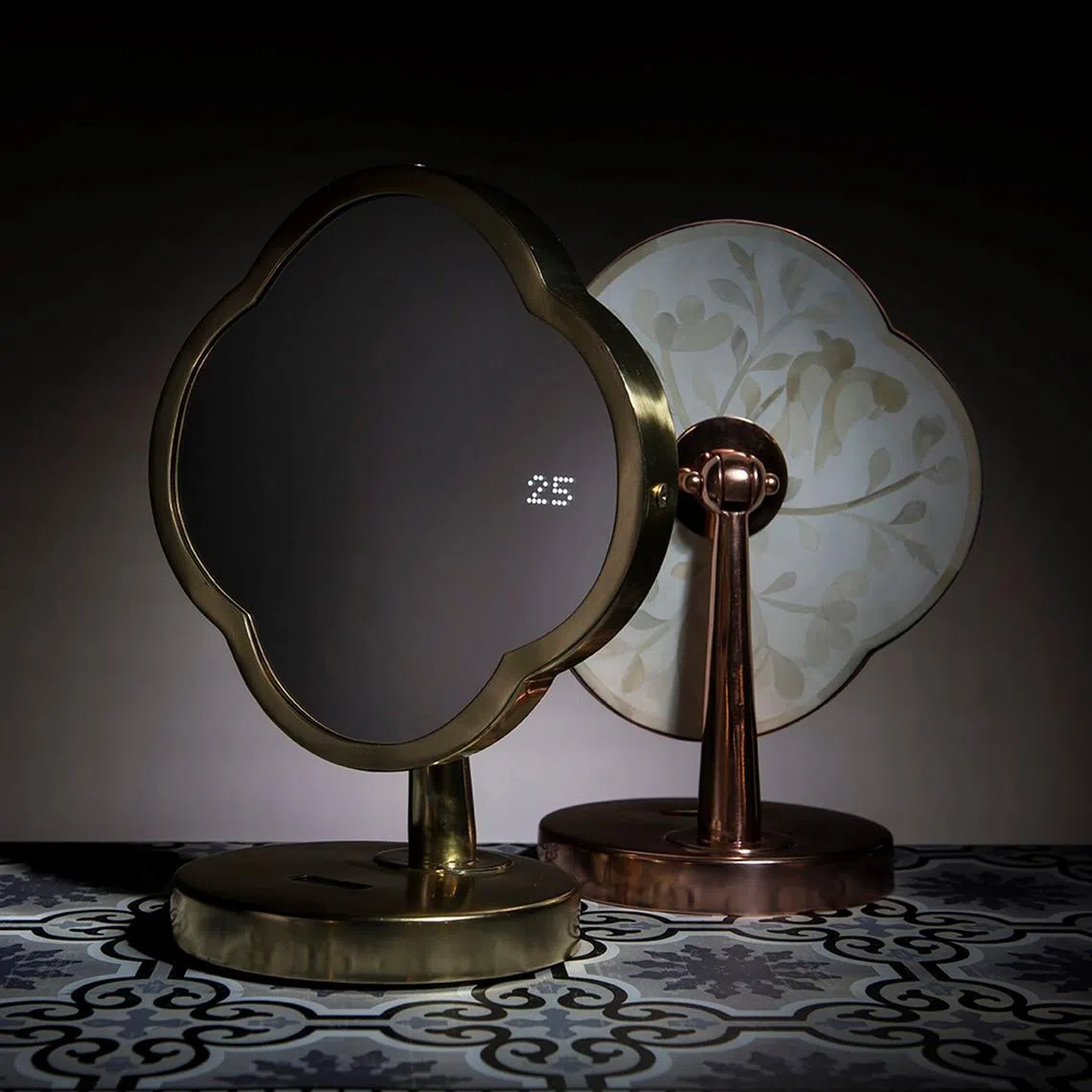
A desk mirror created in collaboration with the Peranakan Museum.
PHOTO: IPSE IPSA IPSUM
Singapore was singled out in 2019 by global data company Statista for its high per capita single-use plastic waste, topping global rankings with an estimated 76kg of single-use plastic waste a person a year.
While recent years have seen a decline in domestic waste per capita, dropping from 1.08kg a person a day in 2013 to 0.88kg in 2023, the city-state’s waste statistics still place it among the world’s highest waste generators per capita.
Mr Mangla says there is still room for improvement, such as by providing stronger incentives for the repair of furniture and decorative accents, and more partnerships between the private and public sectors to come up with reuse solutions.
“The appetite is there. What’s missing is often the connective tissue between idea and implementation.”
Info: Go to ipseipsaipsum.com
WASTD turns food waste into nature-based dyes
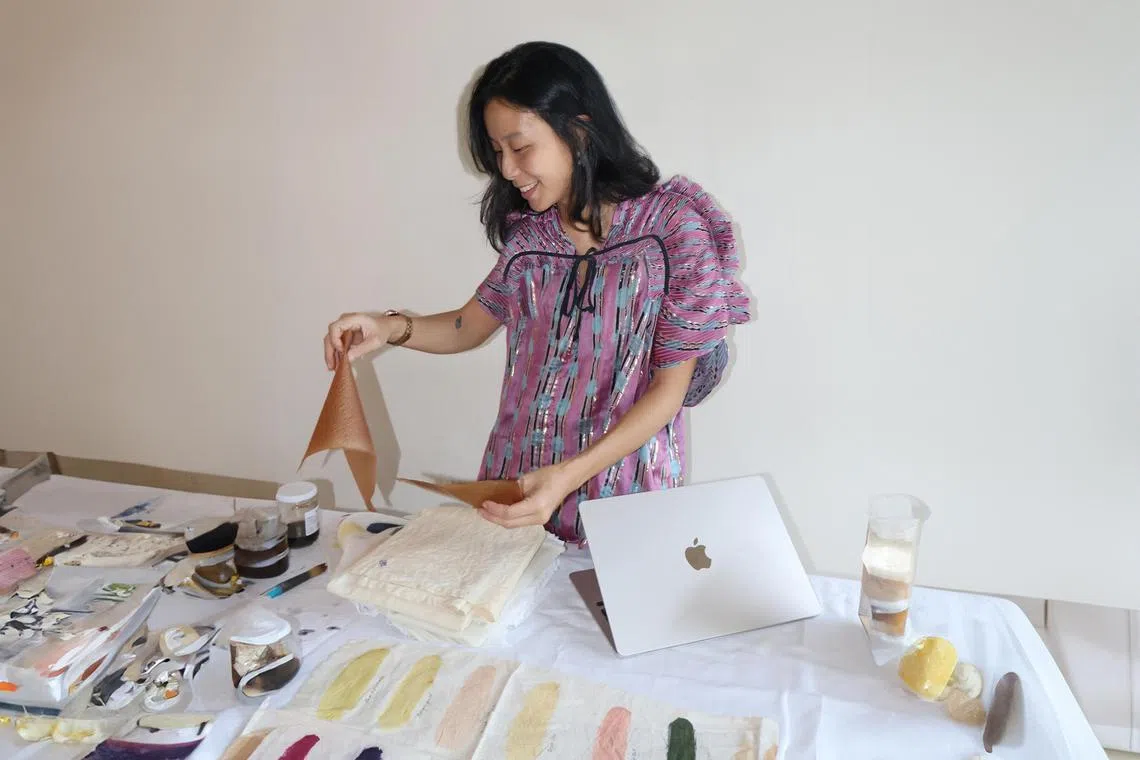
WASTD founder Liu Tingzhi at work in the studio.
PHOTO: WASTD
At the heart of Ms Liu Tingzhi’s work is the imaginative reuse of waste – shifting how businesses and brands create, from a model of overproduction to one rooted in imaginative reuse.
Waste is considered a raw material at her studio WASTD, and a valuable starting point for design.
“Our work spans a broad spectrum of discarded matter – from food waste and glass shards to textile offcuts and plastic packaging,” says the 34-year-old materials and textile designer.
“We don’t limit ourselves to one category of recycled material. Instead, we remain opportunistic and curious – guided not by trends, but by what’s overlooked or underutilised.”
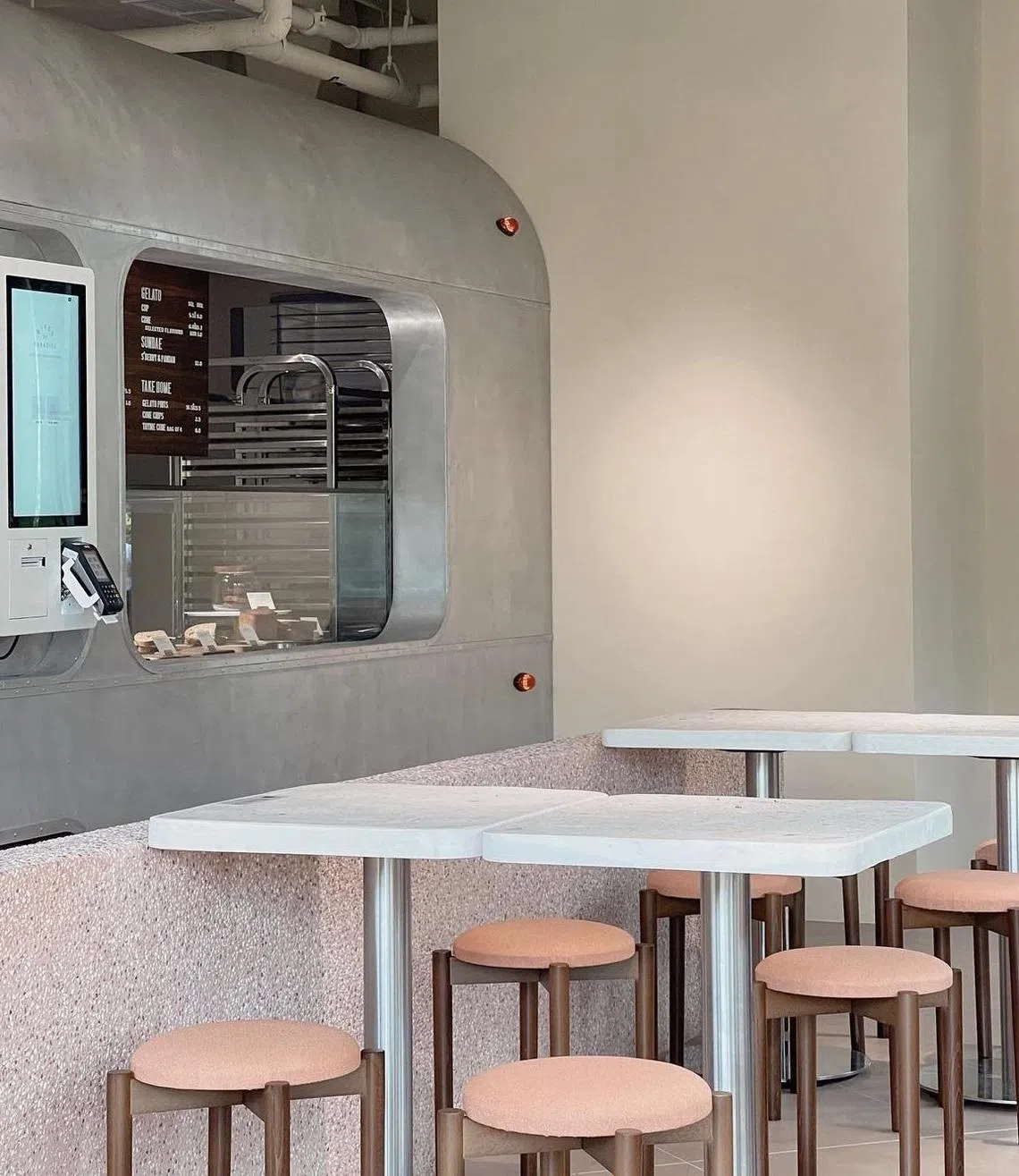
Bespoke table tops for gelato boutique Birds of Paradise Mandai, made from botanical waste and hand cast in eco-resin.
PHOTO: WASTD
She and her team at WASTD in Singapore are turning onion and pomegranate food waste into nature-based dye paints. They are also working on bio-textiles created from food waste that can be used for interior and lighting applications.
While each piece of textile retains a trace of its former life, it is also designed to spark curiosity in its new one.
Ms Liu embarked on a corporate career in the luxury space in 2015, as a materials designer and developer for brands such as Alexander McQueen and Celine in Europe. She returned to Singapore in 2018 to lead design, commercial and product strategy at a direct-to-consumer, mass-market fashion label.
Her experience of visiting factories across Europe and South-east Asia exposed her to how much waste is generated behind the scenes.
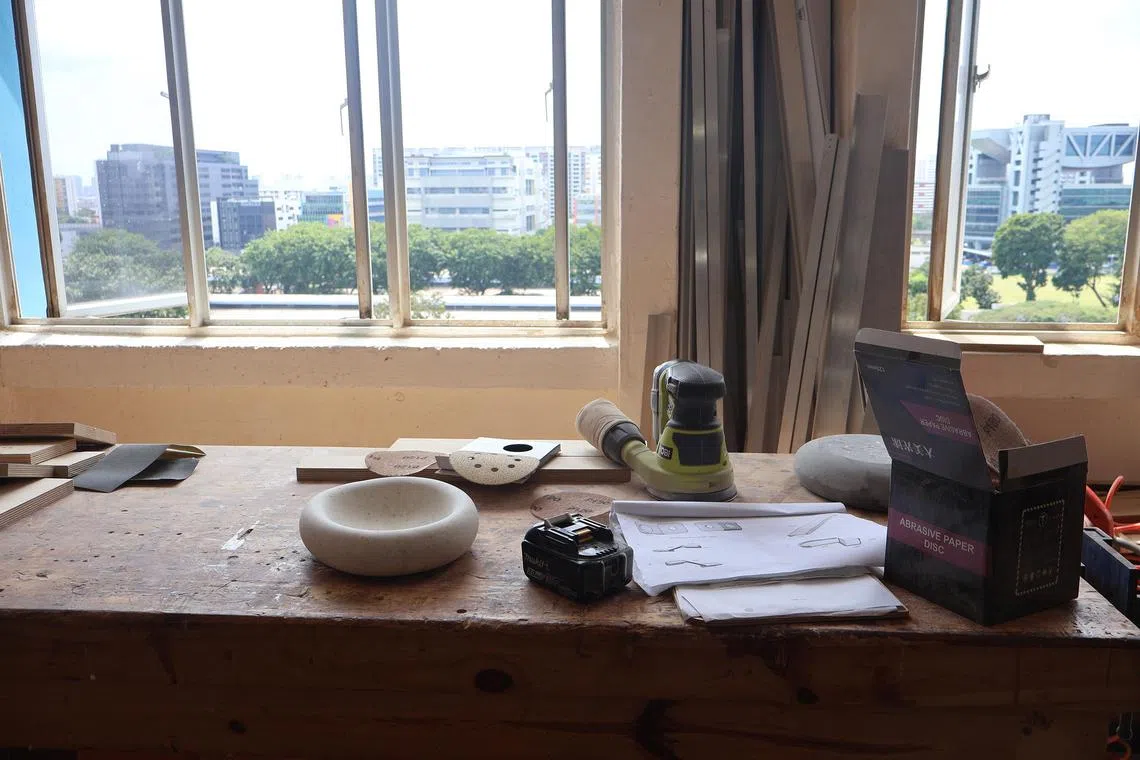
A moment in Ms Liu’s studio.
PHOTO: WASTD
“In today’s world, where purchasing is as easy as a click of a button, we’ve almost outsourced the responsibility of asking where and how our things are made,” says Ms Liu, who graduated in 2015 from Central Saint Martins College of Art & Design in London in the study of fashion textiles.
“All this waste, to me, was an obvious starting point. I asked myself if it would be possible to switch to using something seen as cheap and abundant like waste, instead of constantly extracting and shipping huge amounts of new materials to build the things we needed. That question was the genesis of the concept for WASTD,” she says.
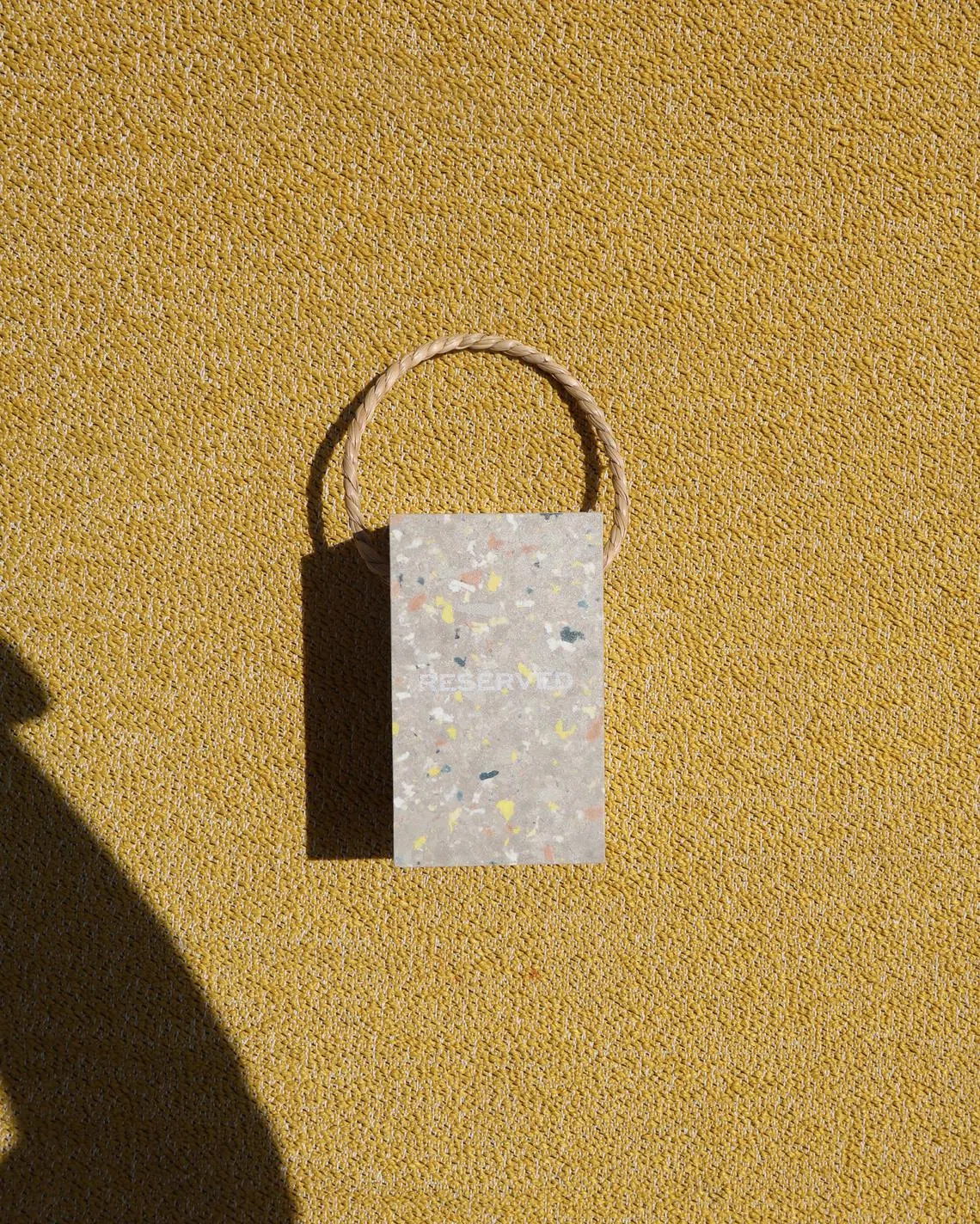
Object design from discarded textile waste, created by WASTD for Tanjong Beach Club.
PHOTO: WASTD
Today, her mission is to change how the public perceives waste by sparking creativity, playfulness and conversation through design.
She designs objects and surfaces using mainly waste materials; working with discarded materials; documenting the process on social media; and is developing materials, objects and experiences that invite people to think differently about what waste can become.
For the next few months, the studio is looking at refining its materials for real-world use, such as for interiors.
The team is also looking into longer-term partnerships with companies to understand their waste streams and co-develop materials or products from what they are discarding.
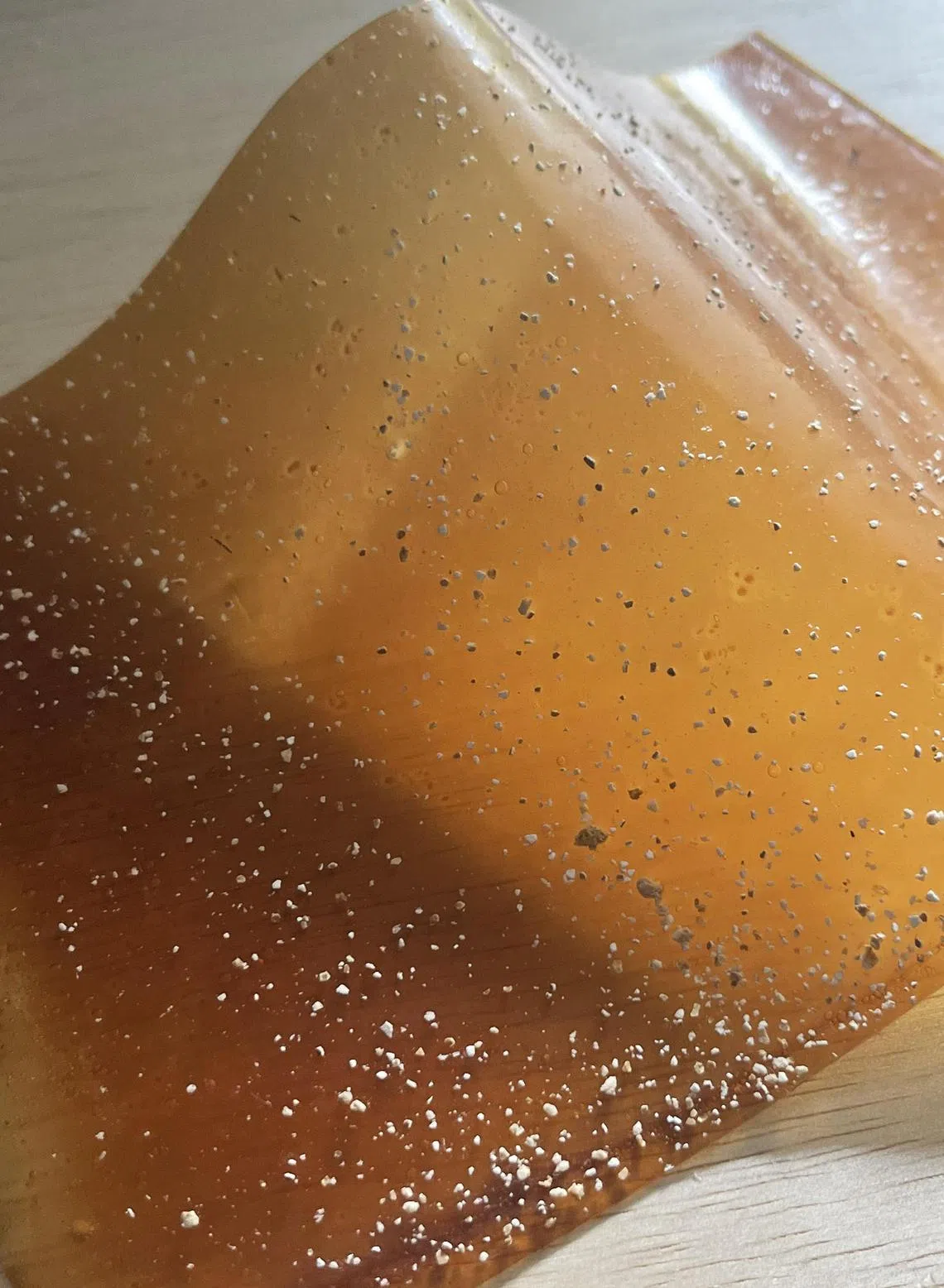
Bio-textile development for interior lamp applications, made from dyes extracted from onion skins.
PHOTO: WASTD
“It’s about closing the loop between what’s thrown out, and what’s needed creatively and operationally,” says Ms Liu.
“We’re not waste collectors. For circular systems to work, we rely on players such as collectors, sorters and processors, who turn waste into usable stock for designers like us to finesse further.”
She says that is why WASTD focuses on research and development as well as storytelling.
“We’re shifting the conversation from ‘What do we do with waste?’ to ‘What could we make from it?’”
Info: Go to wastd.world
Other Supply gives wine bottles new life
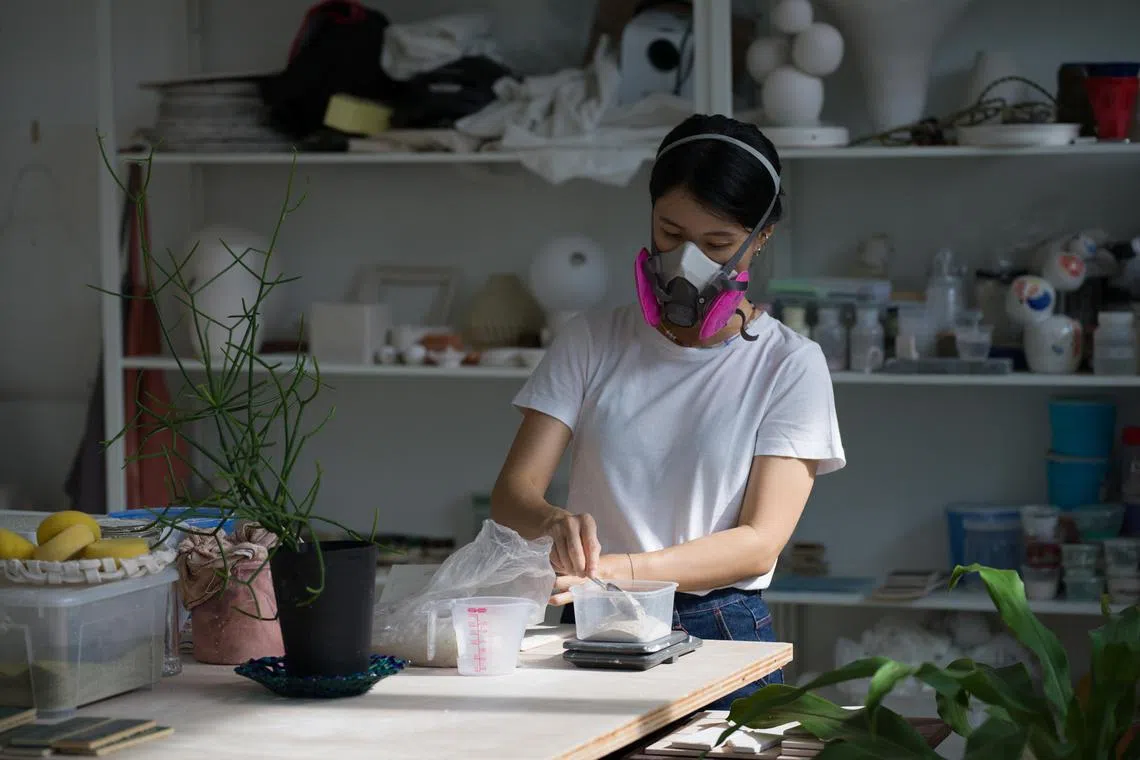
Ms Genevieve Ang in the studio, processing raw material to make glazes.
PHOTO: JOVIAN LIM
Designer and artist Genevieve Ang wants to save glass waste from ending up in Pulau Semakau’s landfill.
The 33-year-old sources for a range of discarded glass from manufacturers and converts the waste material into stunning ceramic glazes, which can be used for tiles and tableware.
She uses 1.2 bottles to make a square metre of ceramic glaze. Glaze is essentially a layer of glass coated on ceramic wares to vitrify (convert to glass) them, making them waterproof. Examples of ceramic glaze include floor and wall tiles, cups and wash basins.
“It is not a lot, but every glass bottle used is a piece that didn’t go to the landfill,” says Ms Ang. “Recycling glass waste also helps to stave off the mining of raw materials. I feel the impact goes beyond just recycling.”
Ms Ang, a former architectural designer who practised for four years in Singapore, reconnected with her childhood love of ceramics in 2016, after graduating from the National University of Singapore’s School of Architecture.
In 2020, she took a break from work and decided to concentrate on ceramics. Two years later, she founded Other Supply, a materials studio that creates ceramic glaze for the ceramics industry, known to rely heavily on limited, natural raw materials which are fast depleting.
Through her work, she wants to raise awareness of glass waste, which takes thousands of years to fully break down.
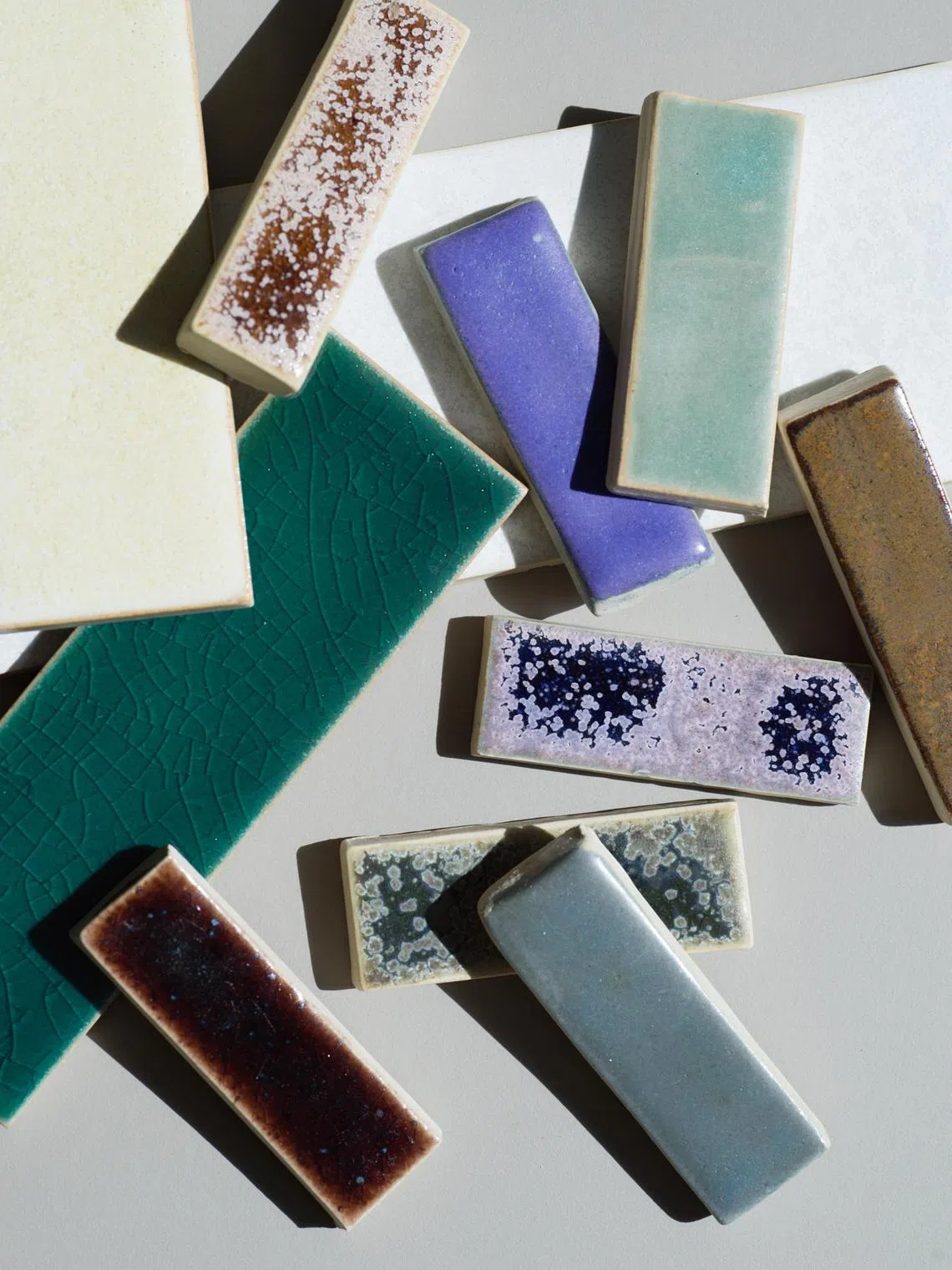
Tiles created using glaze generated from glass waste.
PHOTO: JOVIAN LIM
Ms Ang describes her work as sitting at the intersection of creativity, material innovation and cultural reframing, where she finds herself constantly testing, experimenting and transforming recyclable materials.
Turning glass – the most recyclable material on the planet – into new products results in major reductions in both energy use and carbon emissions, while also advancing the principles of a circular economy.
A circular economy is a system based on the reuse and repurposing of materials or products as a means of continuing production in an environmentally friendly way.
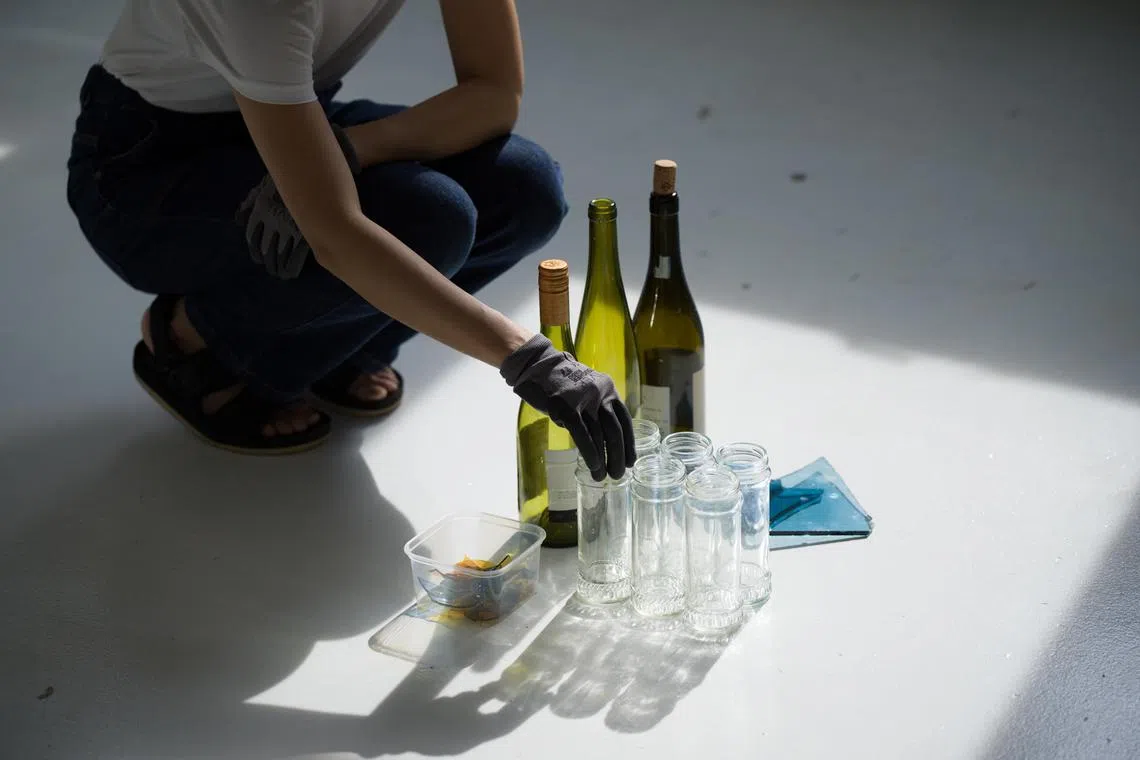
Bottles are among the types of glass waste Ms Ang uses to make glaze.
PHOTO: JOVIAN LIM
Ms Ang feels more can be done on many levels to save glass in Singapore.
“It is also important for people who are creating, such as industrial designers, architects and artisans, to think about using less, question the materials they work with and also experiment more,” she adds.
“There should also be more clearly differentiated waste streams to make it easier to recycle materials such as glass. With clearly differentiated disposal avenues, glass and other materials, such as metal and even ceramics, can be saved and rerouted for recycling and repurposing.”
Info: Go to othersupply.info
Glass artist makes art out of bottle shards
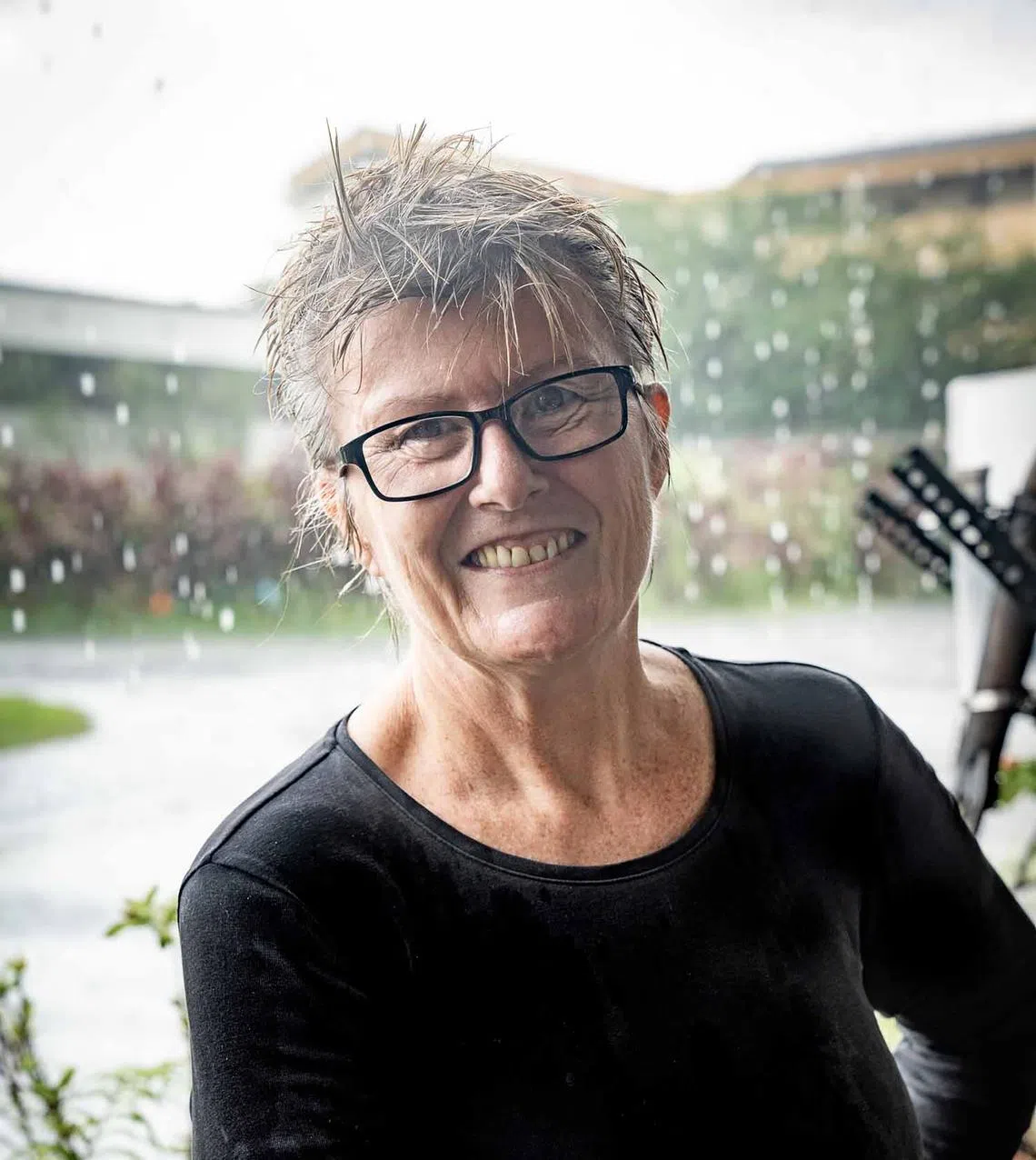
Glass artist B. Jane Cowie is the founder of RefindSG.
PHOTO: REFINDSG
Australia-born glass artist B. Jane Cowie says she is working on rewriting the story of sustainable glass in Singapore.
Through her Singapore-based company RefindSG, the 63-year-old aims to disrupt the throwaway culture here by turning discarded bottles and jars into works of art, functional products and bold installations.
She has been conducting creative glass-making workshops since 2020, shortly after establishing the RefindSG studio at The Yards in Katong.
Besides being a repository for different-coloured glass bottles and jars, the studio is also a hub for community groups that collect “beach glass”, where volunteers keep Singapore’s beaches safe by collecting discarded bottles and jars.
The collected body of glass will be exhibited later in 2025 in the form of a community installation at a Katong gallery. The work sends a message about the amount of glass littered on beaches and highlights local community groups’ efforts to ensure glass is discarded safely.
She also teams up with local businesses and designs closed-loop reusing systems that keep glass in circulation within Singapore – and out of landfills.
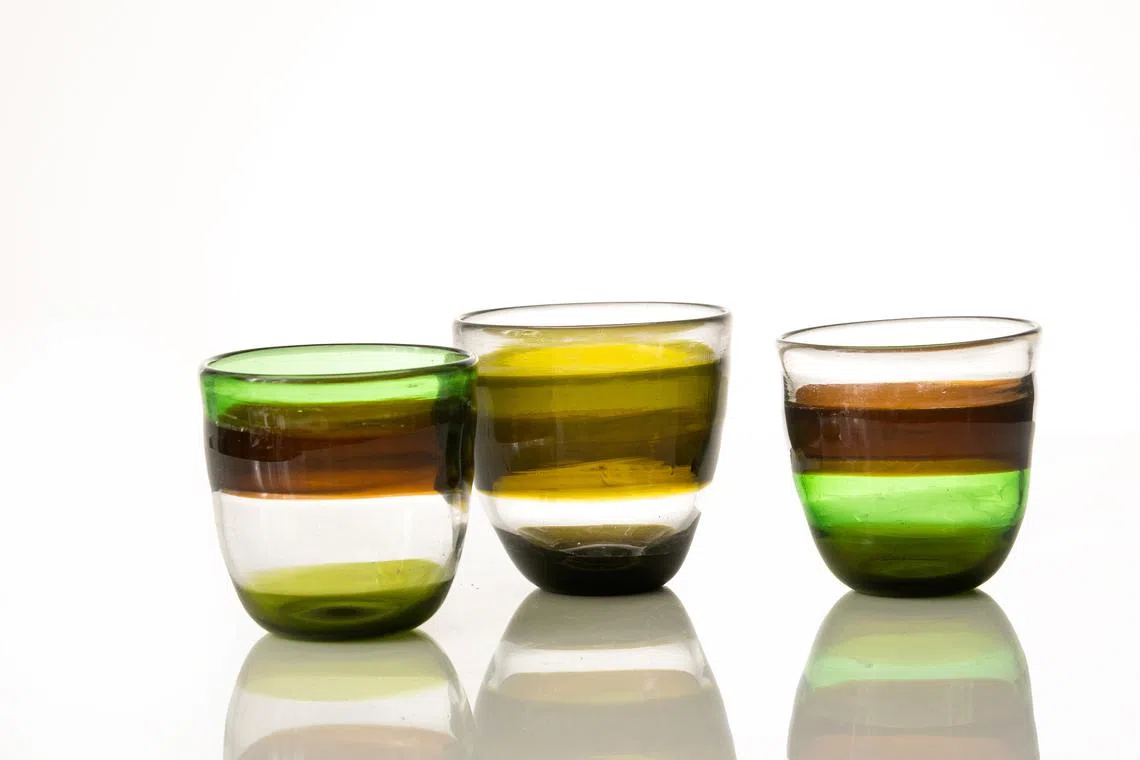
Shot glasses made from bottle necks.
PHOTO: REFINDSG
The studio is expanding to Bali, Indonesia, where Ms Cowie is setting up closed-loop packaging systems and launching immersive glassmaking workshops. These retreats are designed to allow course participants to escape the daily grind, discover the magic of glass and hone their craft skills.
“Glass is not infinitely recyclable, as I have found out after working more than 30 years with the material, which takes about 4,000 years to biodegrade,” says Ms Cowie.
She fell in love with glass when she was a student at the Sydney College of the Arts, a tertiary art school in Australia.
As an undergraduate, she explored kiln-forming techniques, using glass as a sculptural material and creating installation artworks.
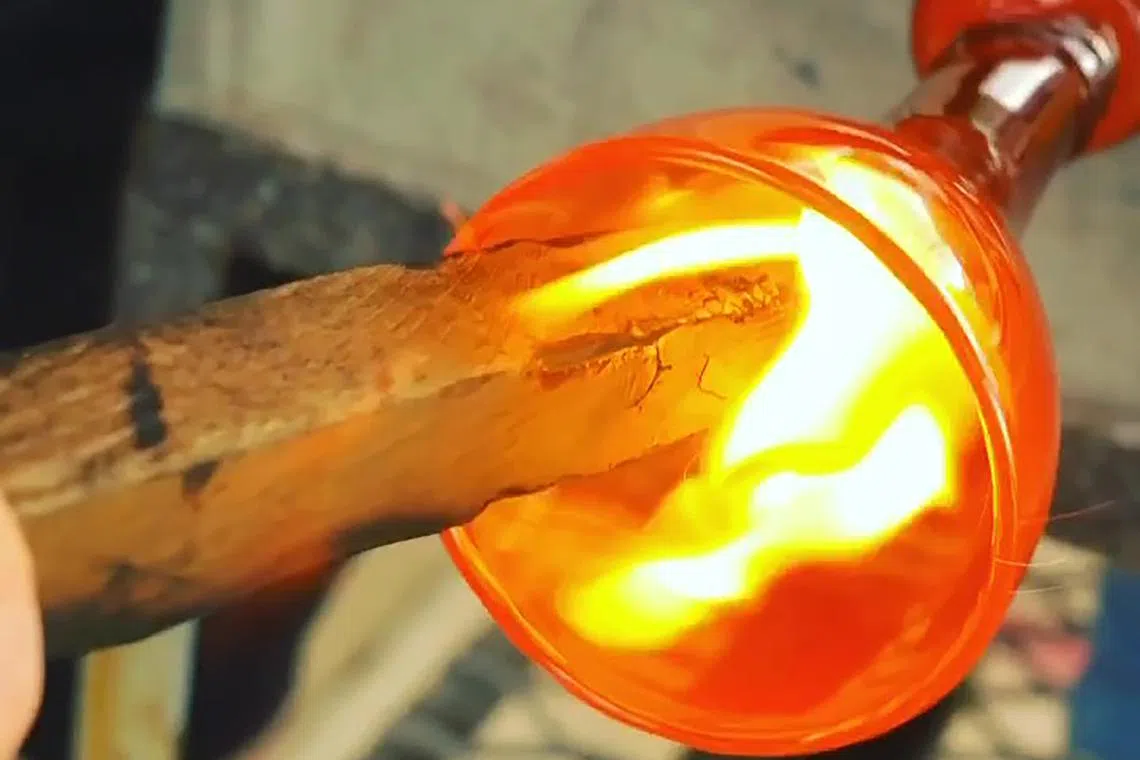
Ms Cowie uses wood to shape molten glass.
PHOTO: REFINDSG
“My first stint at glassblowing was in Britain in 1984, where I was captivated by the process which revealed the beauty of glass, as well as its intensity, colour, texture, light and flowing form. I believe glass is not just a material, but also a dynamic metaphor for life’s delicate and precious nature.”
She prefers to work at lower temperatures, reshaping the bottle forms while preserving their original character, so that one can discern the provenance and story in every piece.
She says she pioneered this process, which has piqued the interest of artists from around the world.
But she is quick to point out that as an artist, she is not motivated by money.
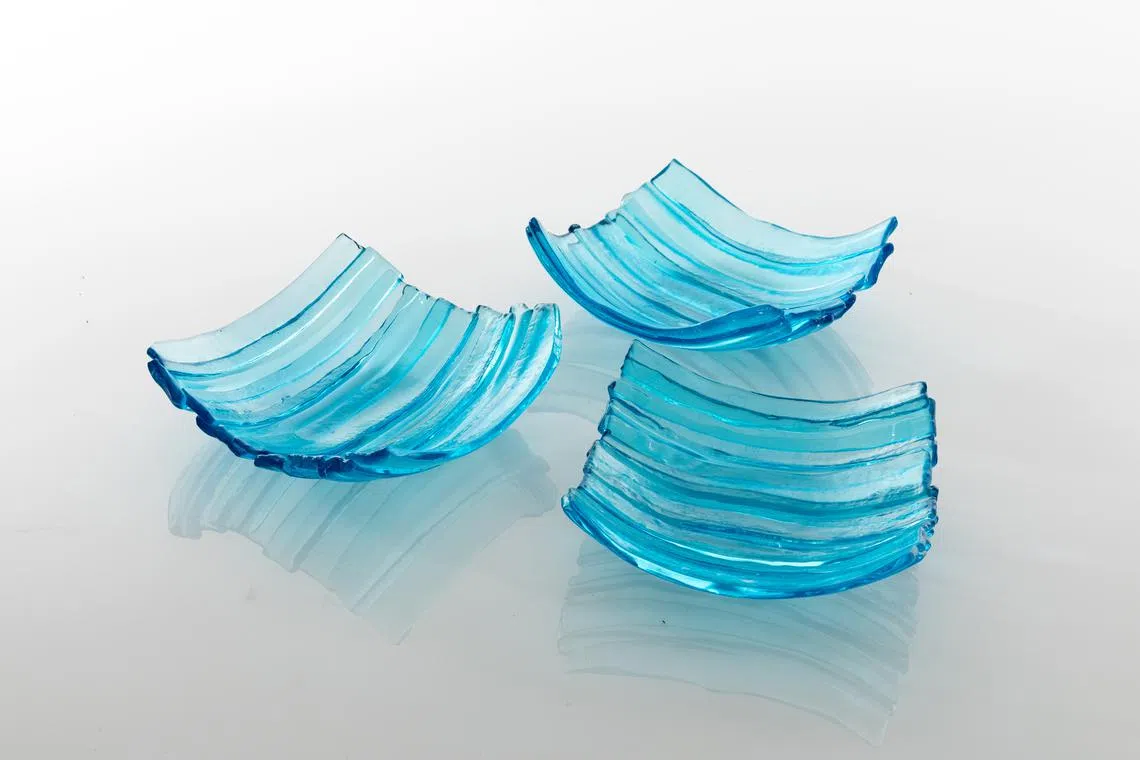
Dishes made from Bombay Sapphire bottles.
PHOTO: REFINDSG
“It is more about making artwork, researching and developing new processes and techniques to make a difference in the fields of glass art and creative practice,” she says.
“By remaking and repurposing glass bottles, my aim is to shift society away from a highly disposable culture towards one where reusing and upcycling is the norm.
“This reflects my commitment to making art that not only expresses beauty, but also carries a message of environmental responsibility and the value of transformation and renewal.”
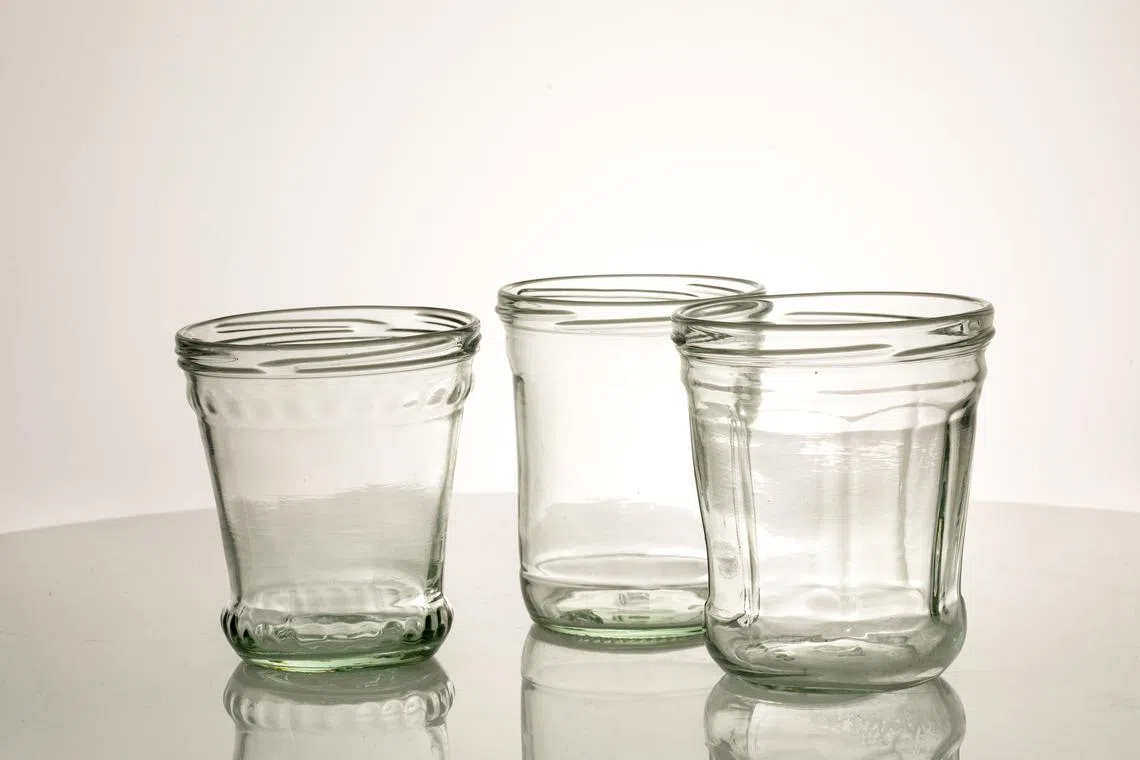
Water glasses made from jam jars.
PHOTO: REFINDSG
Info: Go to refind.sg

